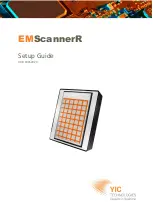
RUGGEDCOM ROX II
User Guide
Chapter 3
Device Management
Modbus TCP Concepts
121
Section 3.21.2
Modbus TCP Concepts
The Modbus TCP Server application is used to transport Modbus requests and responses across IP networks.
The source of the polls is a Modbus
master
, a host computer that issues the polls to a remote host (RTU)
connected to the serial port of the device running the Modbus TCP Server application. The Modbus polls
encapsulated in TCP packets received by the device will be forwarded to the remote host via the serial port
based on the host's address defined in the RTU list. The responses from remote host are TCP encapsulated and
returned to the
master
that originated the polls.
Port Numbers
The TCP port number dedicated to Modbus use is port 502. The Modbus TCP Server application can also be
configured to accept a connection on a configurable port number. This auxiliary port can be used by masters that
do not support port 502.
Retransmissions
The Server Gateway offers the ability to resend a request to a remote host should the remote host receive the
request in error or the Server Gateway receives the remote host response in error.
The decision to use retransmissions, and the number to use, depends upon factors such as:
• The probability of a line failure.
• The number of remote hosts and the amount of traffic on the port.
• The cost of retransmitting the request from the server versus timing-out and retransmitting at the master. This
cost is affected by the speed of the ports and of the network.
ModBus Exception Handling
If the Server Gateway receives a request for an unconfigured remote host, it will respond to the originator with a
special message called an exception (type 10). A type 11 exception is returned by the server if the remote host
fails to respond to requests.
Native Modbus TCP polling packages will want to receive these messages. Immediate indication of a failure can
accelerate recovery sequences and reduce the need for long timeouts.
Section 3.21.3
DNP Concepts
ROX II supports Distributed Network Protocol (DNP) version 3.0, commonly used by utilities in process
automation systems. DNP3 protocol messages specify source and destination addresses. A destination address
specifies which device should process the data, and the source address specifies which device sent the
message. Having both destination and source addresses satisfies at least one requirement for peer-to-peer
communication since the receiver knows where to direct a response.
Each device supporting DNP must have a unique address within the collection of devices sending and receiving
DNP messages.
Address Learning for DNP
ROX II implements both local and remote address learning for DNP. A local Device Address Table is populated
with DNP Addresses learned for local and remote DNP devices. Each DNP address is associated with either a
local serial port or a remote IP address.
Содержание RUGGEDCOM RX1510
Страница 32: ...RUGGEDCOM ROX II User Guide Preface Customer Support xxxii ...
Страница 44: ...RUGGEDCOM ROX II User Guide Chapter 1 Introduction User Permissions 12 ...
Страница 62: ...RUGGEDCOM ROX II User Guide Chapter 2 Using ROX II Using the Command Line Interface 30 ...
Страница 268: ...RUGGEDCOM ROX II User Guide Chapter 4 System Administration Deleting a Scheduled Job 236 ...
Страница 852: ...RUGGEDCOM ROX II User Guide Chapter 5 Setup and Configuration Enabling Disabling an LDP Interface 820 ...
















































